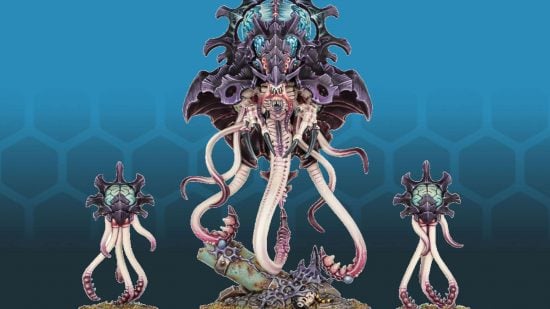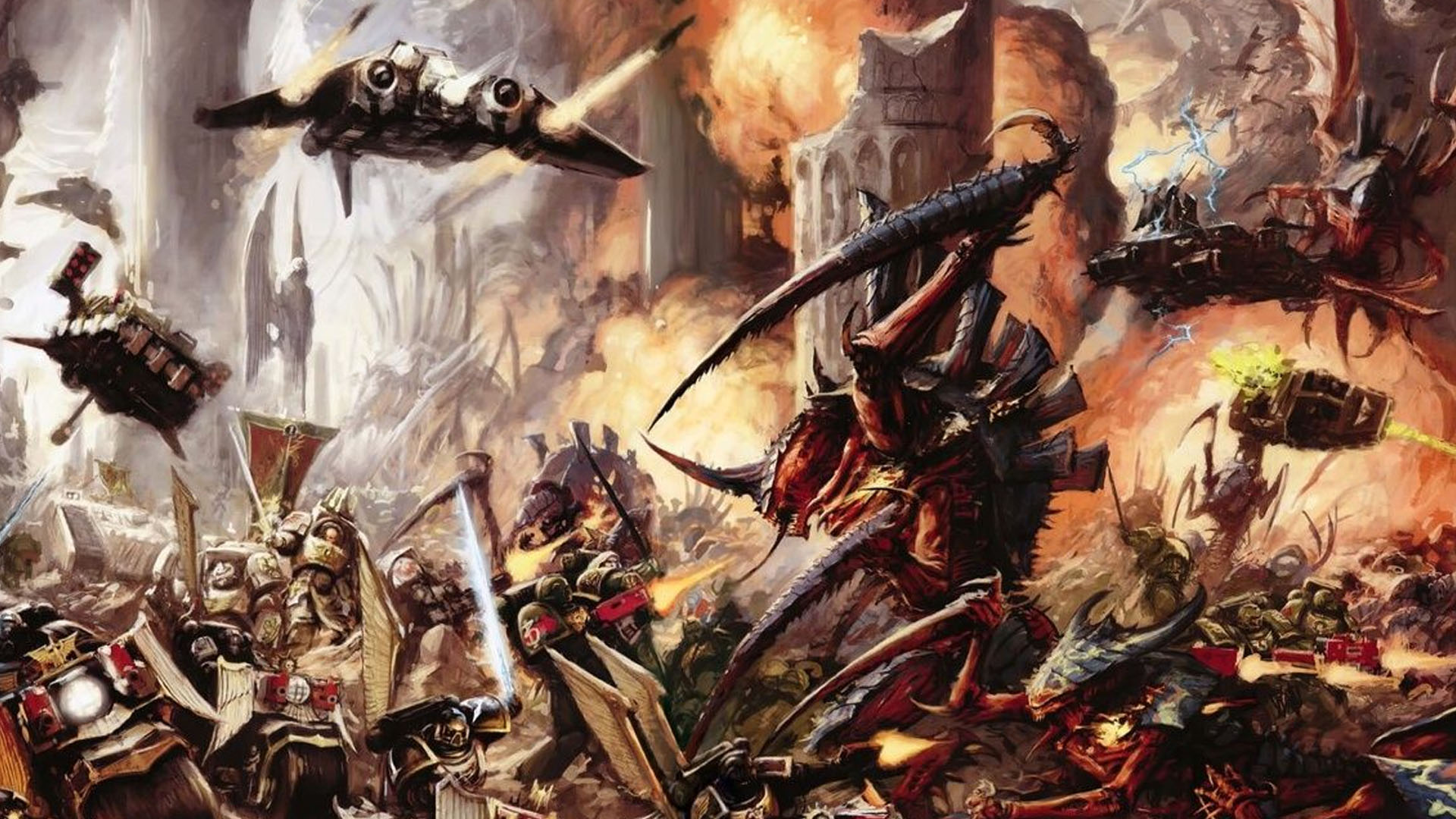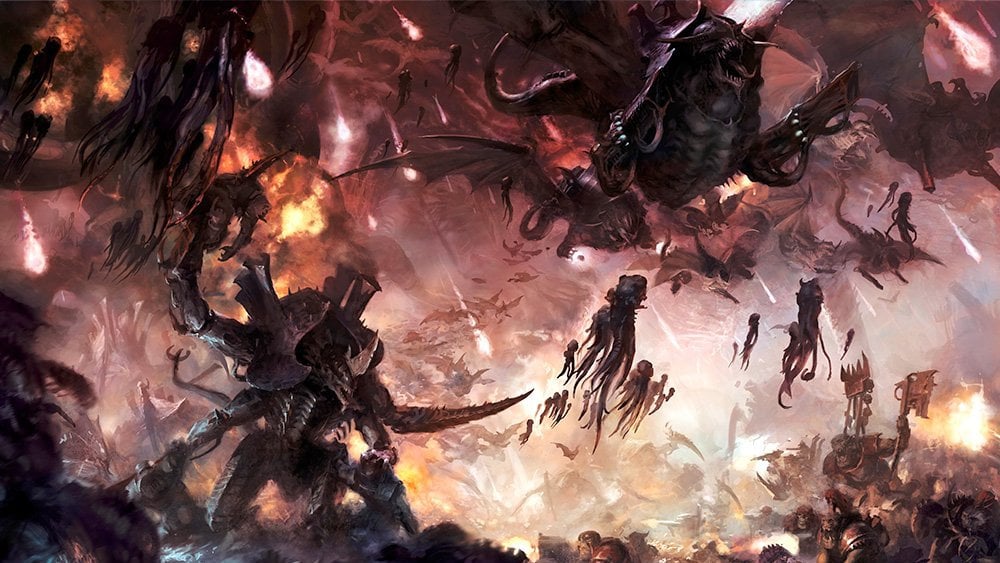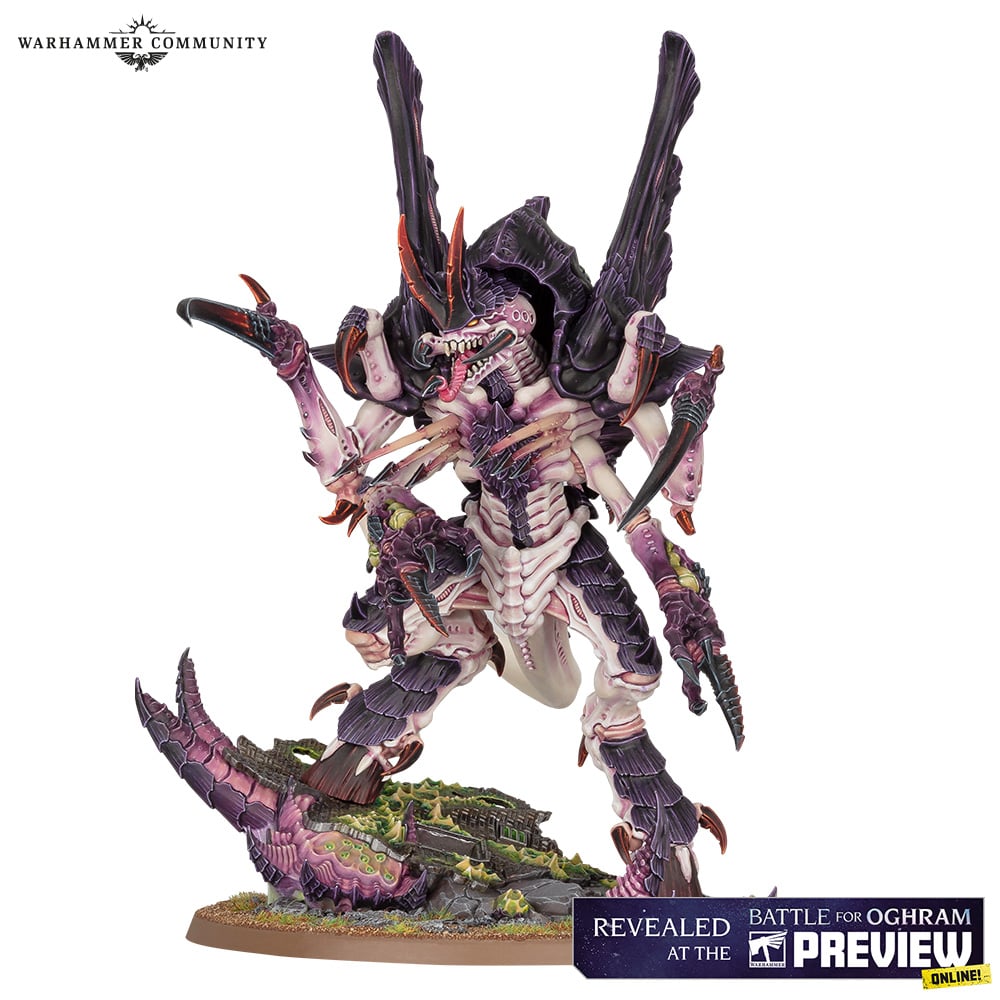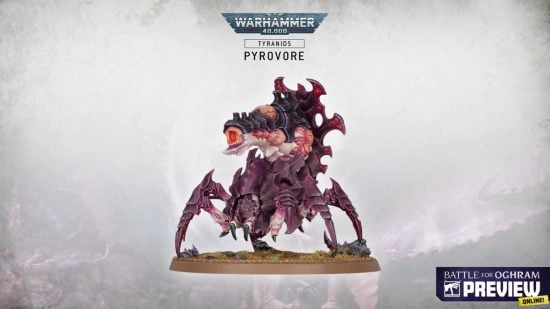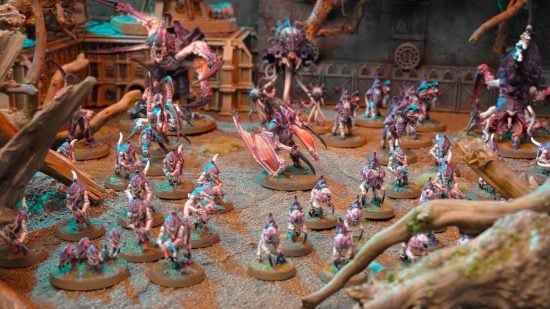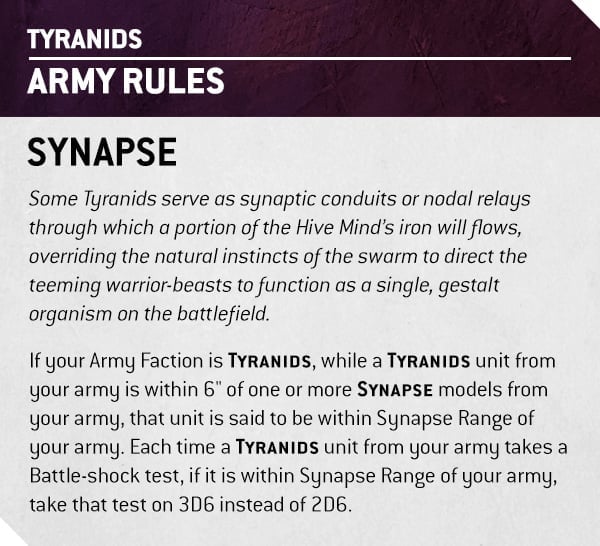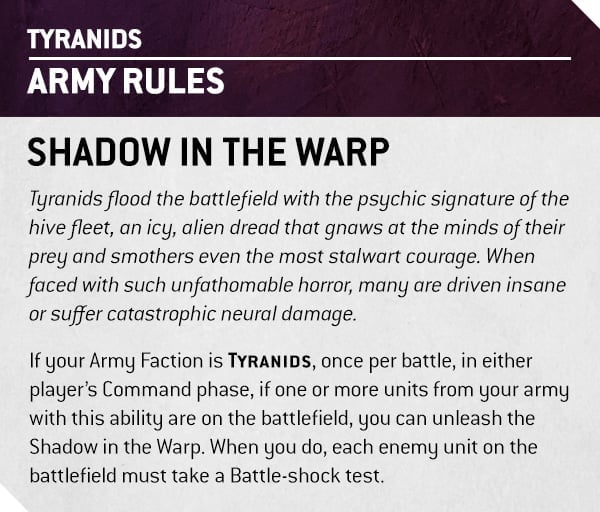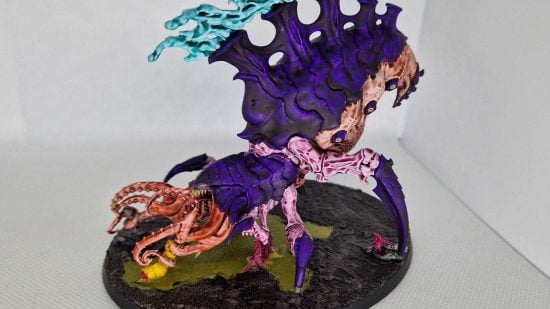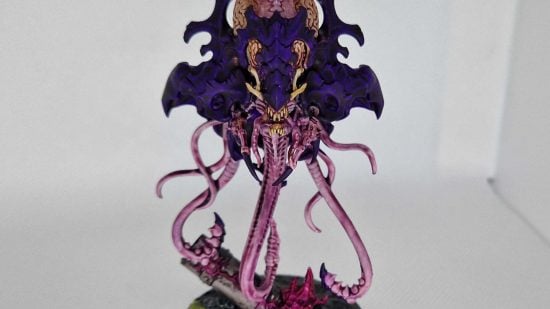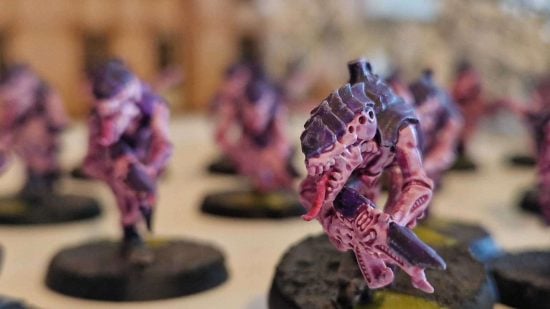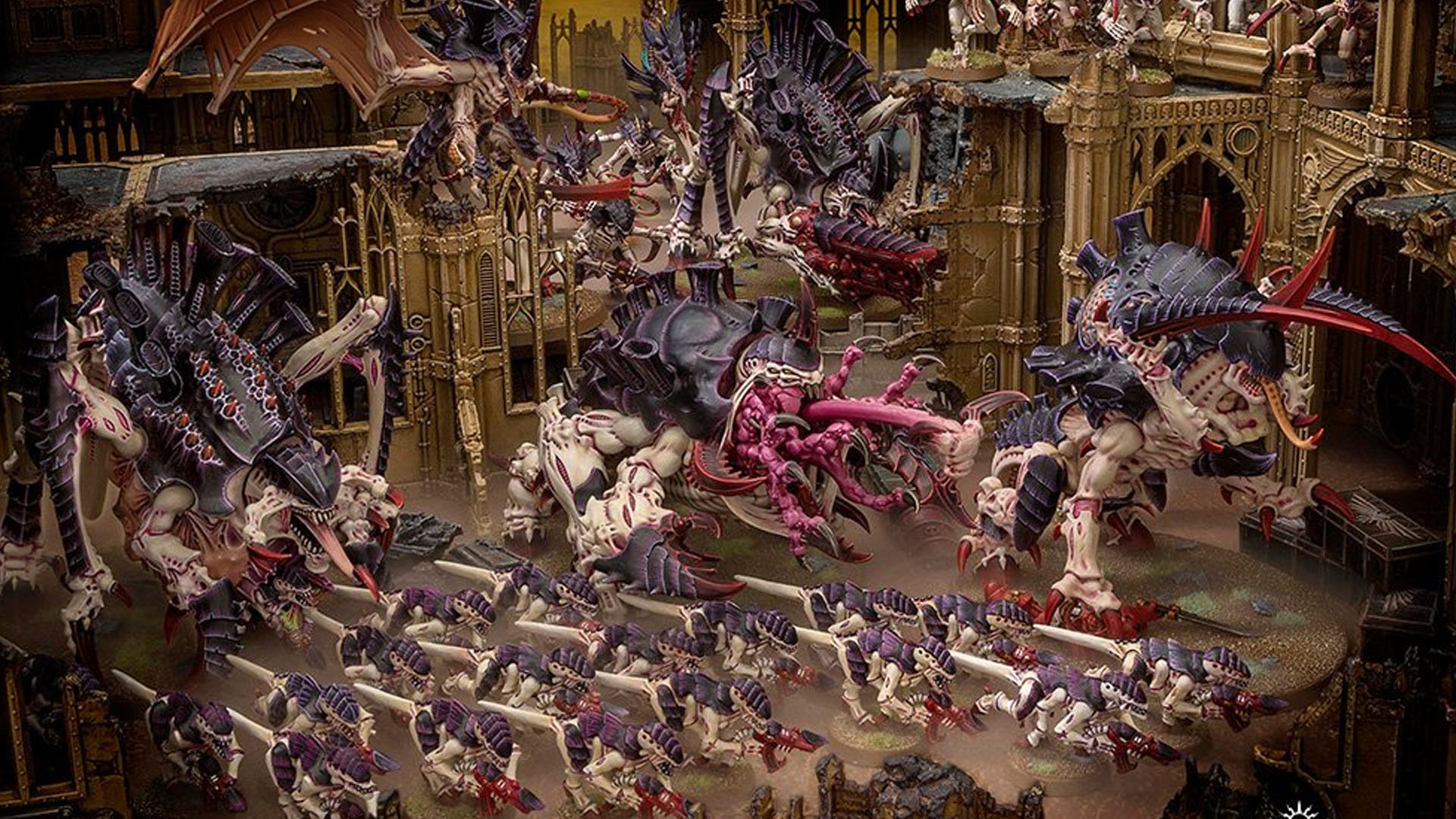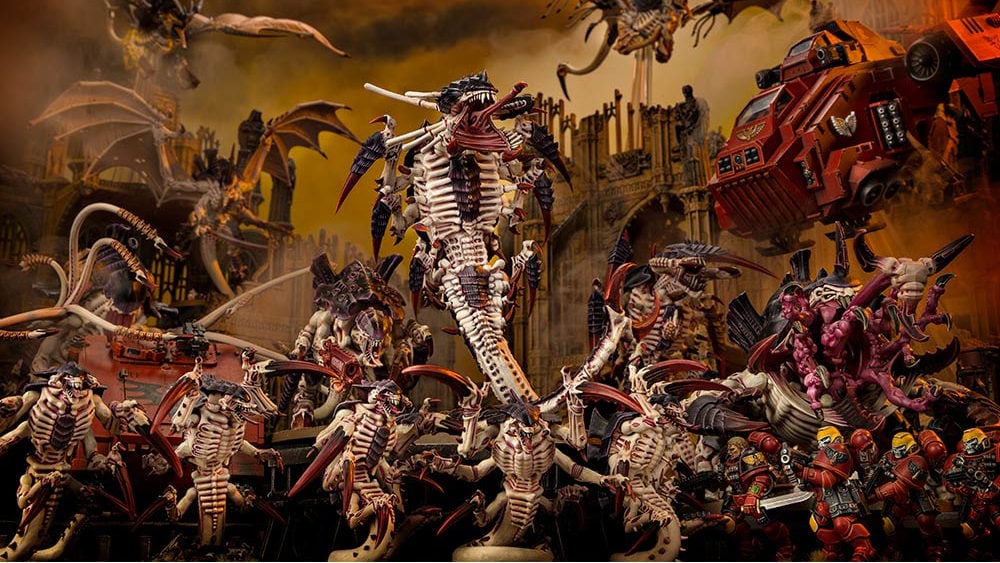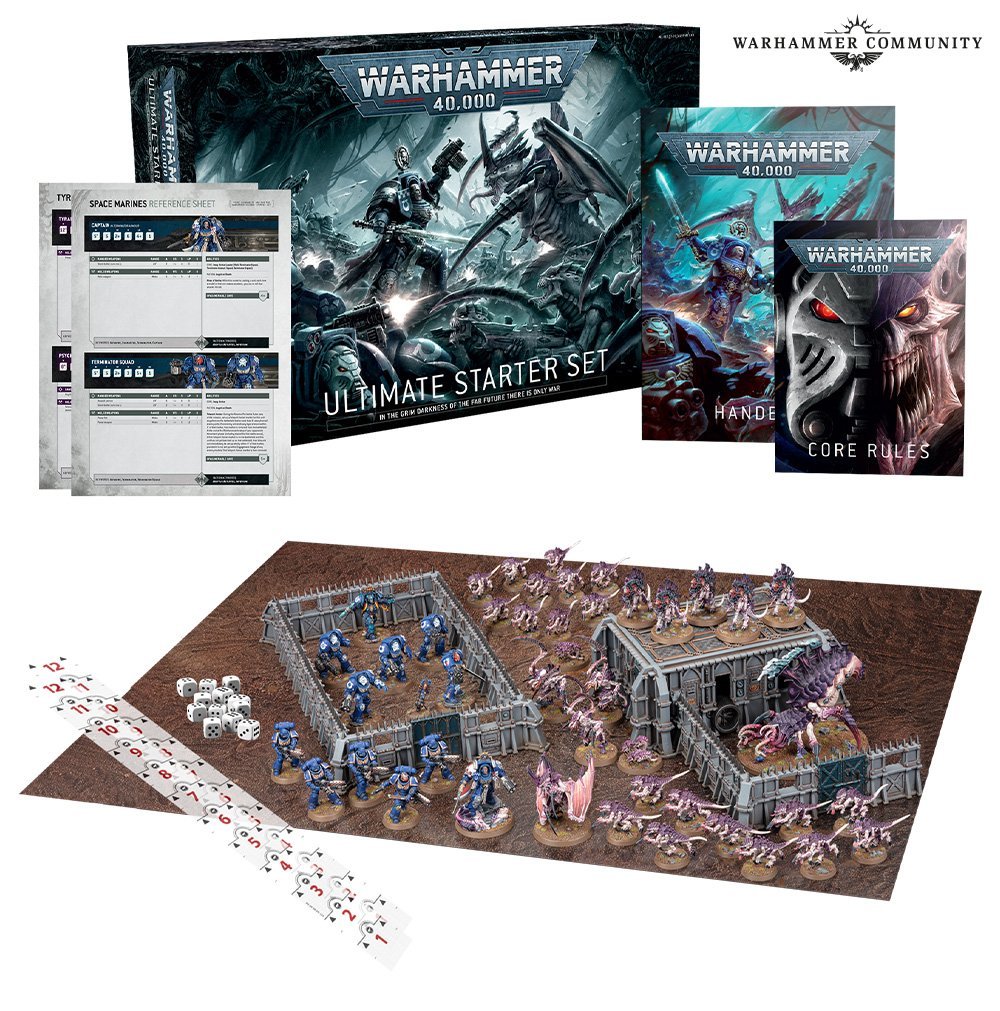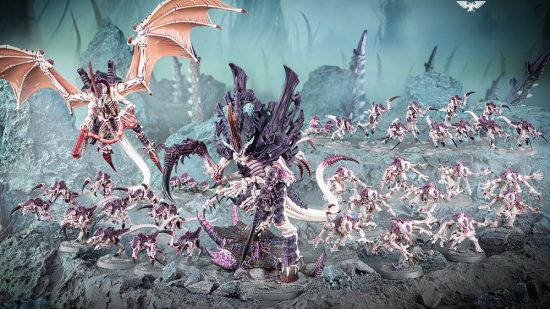02/07/2024 This guide was originally written by Alex McHugh in October 2023 – since then it’s been substantially overhauled with more lore and new rules by Timothy Linward.
The Warhammer 40k Tyranids are a collection of alien species from beyond the boundaries of our galaxy, bound together by the massive psychic will of the Hive Mind, and driven by an insatiable hunger. This guide explains the lore of the Tyranid Hive Fleets, as well as the key rules for how they play in Warhammer 40,000.
Wargamer has lots of other guides to the Warhammer 40k factions if you want to understand how the Tyranids fit into the wider Warhammer 40,000 universe. If you’re discovering Tyranids for the first time because you’re waiting for the Space Marine 2 release date, make sure you read up on the Space Marines as well.
Let’s break down the Warhammer 40k Tyranids and learn how they tick:
- What are Tyranids?
- Tyranid Hive Fleets
- How are Genestealers and Tyranids connected?
- Can the Imperium defeat the Tyranids?
- Tyranid units
- Tyranids rules
- Tyranid detachments
- Tyranid paint schemes
- Tyranids codex release date
- Tyranid tactics
- Combat Patrol Tyranids
What are Tyranids?
Tyranids are ravenous aliens from beyond the edge of the galaxy, which travel in huge, interstellar Hive Fleets. The Tyranids are not one species, but rather a vast conglomerate of genetically engineered organisms. Every aspect of their technology – from weaponry to starships – is made from living entities.
The Hive Fleets have exhibited only one objective since entering the solar system – devour the biomass of every planet in their path. They are terrifyingly well-adapted to this purpose, and countless worlds have been stripped of life, water, and even atmosphere, leaving only inert bedrock in their wake.
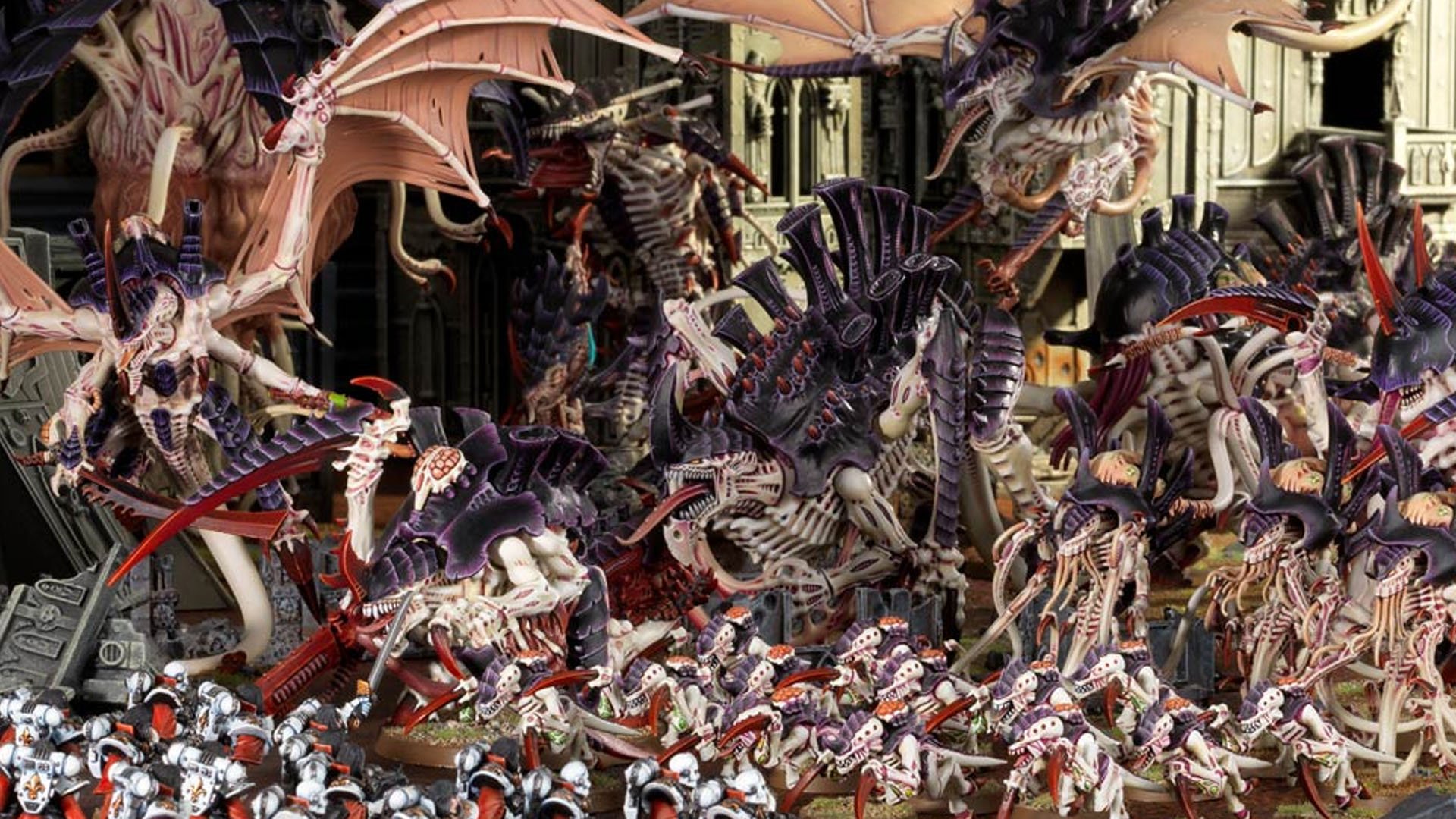
Tyranid invasions
Tyranid invasions occur in stages. Before the planet is even aware it is under threat, the Hive Fleet will seed the planet with vanguard stealth organisms such as Lictors to assassinate, gather intelligence, and undermine the planet’s resistance.
When the invasion begins in earnest, huge spores are disgorged from the bioships, crashing into the planetary surface and birthing terrors beyond number which swarm to overwhelm the planetary defenders. Flocks of harpies obscure the skies, Termagants and Hormagaunts bound forth in their thousands, and huge Carnifexes crush the strongest fortifications underfoot.
As well as macro-scale predators, microscopic biomorphs are disgorged into the atmosphere. As well as hindering the defenders, blocking sight lines and choking lungs, these begin the process of breaking down the planet’s biomass.
As the invasion draws to its inevitable close, harvester biomorphs like Ripper Swarms and Haruspexes will consume everything on the planet, stripping it down and then walking to their deaths in vast biodigester vats. Vast capillary towers of bone and sinew snake skywards, allowing the orbiting hive fleet vessels to feed from the dying world. Nothing is spared, nothing wasted, and once the fleet is complete, it will move on in search of its next meal.
The Hive Mind and the Shadow in the Warp
The Tyranids are collectively controlled by the Hive Mind, a psychic presence of such terrifying power that it blocks out all other emanations of the warp, and drives all but the strongest 40k psykers to terror or madness. This ‘Shadow in the Warp’ signals the death of worlds, and its deadening psychic blanket ensures they cannot send out a cry for aid.
It’s unclear whether the Hive Mind is a separate entity, a gestalt composed from the minds of particularly potent Tyranid psykers (such as Norn Queens), or an emergent effect of so many lesser Tyranid minds being joined together.
Synapse creatures
When separated from the Hive Mind, Tyranids become instinctual, listless, or feral. The commands of the Hive Mind are distributed via synapse creatures. A swarm of Tyranids analogous to a “company” of human troops might have a a Hive Tyrant or Neuro Tyrant as the lynchpin of its synaptic connectivity, while individual sections could be marshalled by Neurothropes or broods of Tyranid Warriors.
It’s not clear if these entities have a greater ability for individual thought, or simply a higher capacity to channel the will of the Hive Mind. In many cases they are also powerful psykers, as well as formidable creatures of claws and fangs.
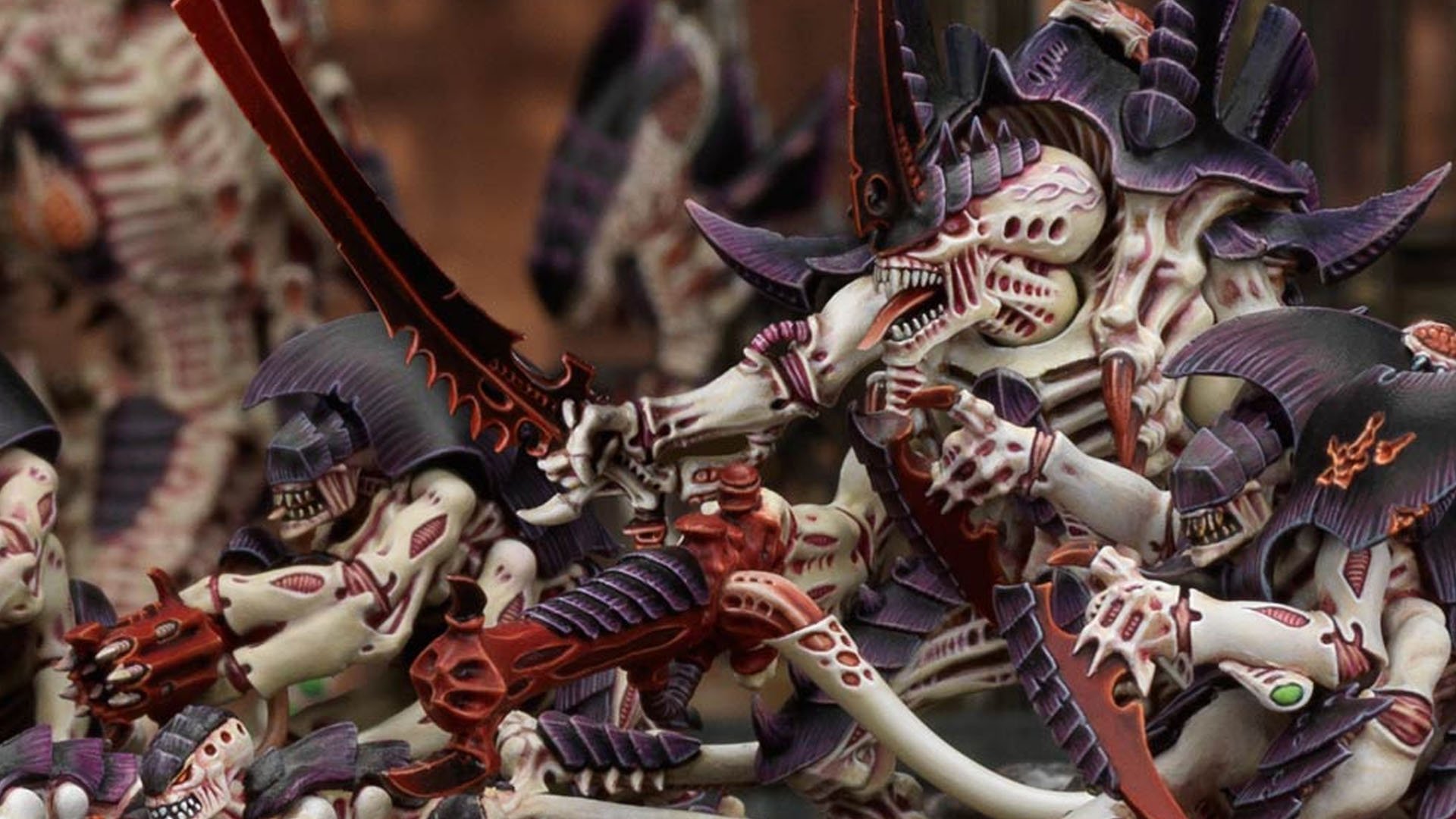
Where do Tyranids come from?
Humanity first encountered the Tyranids in 745.M41 on the planet Tyran (formerly Tyran Primus), on the Eastern fringe of the galaxy. A small Adeptus Mechanicus research base on the planet was able to get a message out before being overwhelmed. This encounter, with the hive fleet later named Behemoth, was the starting point of the first Tyrannic war.
When more was learned about them, it became clear that the Tyranids are not of our galaxy. Instead, they have descended upon the Milky Way from the void between galaxies.
How did the Tyranids find the Imperium?
The Tyranids were drawn to our galaxy by events that occurred during the Horus Heresy, despite having no interest in the eternal war between mankind and Chaos. During Horus’ rebellion, the Pharos device was found – a beacon that allowed Ultramarine ships, among others, to sail the tides of the immaterium during a period of intense warp storms.
In one battle the Pharos device became overloaded, sending a psychic signal out in all directions. This won the battle for the loyalists – but it also burnt like a lighthouse. It was noticed by the powerfully psychic Hive Fleets, which changed their course in the deep void. It took almost ten thousand years for the Tyranids to reach the edges of the Milky Way.
Can Tyranids travel through the warp?
Tyranids are not capable of generating the gellar fields necessary to protect a vessel from entry into the warp, and it’s not clear if they can translate a vessel into the warp. However, they are able to move substantially faster than the speed of light, through unknown means, so they can traverse interstellar distances in months rather than years or decades.
Tyranid Hive Fleets
The Tyranids are divded among Tyranid Hive Fleets. Each of these humongous, biomechanical armadas were given names by humanity, and many have been encountered or destroyed.
Little is known of how many Hive Fleets are currently descending on the galaxy. What’s more, no one knows if these Hive Fleets represent the majority of the Tyranid forces or just a tiny scouting party.
Each Tyranid Hive Fleet has its own specialisation. Here are some of the most famous Hive Fleets known to us:
Hive Fleet Behemoth
Hive Fleet Behemoth was the first to make contact with humanity (that we know of, at least), and as a result has become the most infamous of them all. Striking deep into Ultramarine space, it was eventually defeated at the Battle for Macragge, with its supremely aggressive Tyranid Warriors proving no match for Ultramarine forces at the end.
Hive Fleet Kraken
Kraken was the second Hive Fleet that humanity encountered, ultimately being responsible for the Second Tyrannic War. Kraken Tyranids are known for their speed, moving faster than believed possible to strike behind enemy lines.
Hive Fleet Gorgon
Defeated by the Tau and the Astra Militarum, the Tyranids of Hive Fleet Gorgon specialised in adaptation, twisting their forms to the requirements of any situation. While many Hive Fleets rely on a few stalwart bioforms, Gorgon fielded variations never seen before, and never seen again following its destruction.
This Tyranid Hive Fleet was smaller than most but became a juggernaut through smart, stealthy methods. Its Tyranids would hurl their spores at unsuspecting planets; their submerged Norn-Queens breeding an army out of the ground itself, burrowing and forming networks under the feet of their enemies before rising to feast. This Hive Fleet has since been largely destroyed, but given Tryanids’ nature, it’s impossible to ever be certain of their destruction.
Hive Fleet Leviathan
Leviathan is the largest Tyranid Hive Fleet to ever assault the galaxy. Leviathan’s unique ability relates to the strength of its synaptic network that semi-telepathically binds its Tyranids. It allows them to fight long past most normal Tyranids would be laid low, always serving the hive mind even when mortally wounded.
Hive Fleet Hydra
Hive Fleet Hydra was encountered not by humanity but by Dark Eldar. Finding them still slumbering before their invasion of the galaxy, the Drukhari’s curiosity saw them attempt to capture the Tyranids. Unfortunately for them, and us, Hive Fleet Hydra regenerates faster than any other Hive Fleet, seeing the fleet awaken and fall upon the unsuspecting Eldar with horrifying alacrity.
Hive Fleet Kronos
Hive Fleet Kronos is unique even among Tyranids, as it seems to specialise in fighting the forces of Chaos. One of the ways it achieves this is to stand back, unlike many other Tyranid forces, preferring to shoot from a distance rather than scuttle into the melee and risk the taint of the Ruinous Powers.
How are Genestealers and Tyranids connected?
Genestealers are a vanguard organism for the Tyranids hive fleets. Each Genestealer is a lethally fast, durable, and deadly melee combatant, equipped with four limbs, two ending with humanoid hands, the others in serated claws. Their reproductive system allows them to subvert alien species and prepare them for invasion by the Hive Fleets.
Genestealers can implant a packet of their genetic material into another living host via their tongue, known as the “Genestealer’s kiss”. When the host reproduces, they will produce a Genestealer hybrid. Rather than being horrified by the monstrous half-alien child, they will protect it. Genestealer Cults will grow up from the ‘progeny’ of the original Genestealer, which will grow into a massive Broodlord.
These cults have two purposes. They generate a psychic signal in the warp, which acts as a beacon, luring the Tyranid hive fleets towards their host planet. As the hive fleets approach, the cult will launch an uprising, softening the planetary defenses so that the Tyranids arrive to find the world undefended.
In the first edition of Warhammer 40k, Tyranids and Genestealers were unrelated species, but the two species were quickly connected in the lore. Genestealers have been present in the Milky Way galaxy for far longer than the rest of the Tyranid Hive Fleet, but it’s unclear if they are a native species that the Hive Fleet assimilated, or if they arrived before the rest of the fleet.
Can the Imperium defeat the Tyranids?
The Imperium has won several large victories that have shattered the cohesion of individual tendrils of individual hive fleets. However, the prospect of defeating the Tyranids altogether seems remote.
The First Tyrannic War (745.M41)
The Imperium’s first encounter with the Tyranids saw Hive Fleet Behemoth overrun the Ultramar sub-sector, fully devouring the garden world Prandium. Their assault was only broken during the defense of Ultramar itself, but only at the cost of the complete sacrifice of every member of the Ultramarines veteran first company.
The Second Tyrannic War (990-993.M41)
Hive Fleet Kraken entered the galaxy during the Second Tyrannic War, their path leading them to the vital industrial world Ichar IV. They were once again halted by the Ultramarines, but the planet lay in ruins. Several Space Marine Chapters were all but wiped out, and Sotha, homeworld of the Scythes of the Emperor, was one planet destroyed in the carnage.
The Third Tyrannic War (997.M41 – opening of Great Rift)
Though previous attacks had entered the galaxy from the Eastern rim, Hive Fleeet Leviathan entered the galaxy from below the galactic plane, attacking areas including Tarsis Ultra in the Eastern Fringe and Cryptus in the Red Stars region at the northern part of the galactic hub.
The third Tyrannic war saw the Imperium deploy extreme measures, with Inquisitor Kryptman championing the lethal measure of destroying planets in the Hive Fleet’s path via Exterminatus rather than allow them to feed and fuel the Tyranid invasion. Lord Dante of the Blood Angels chapter took the unprecedented step of recalling all successor chapters to fight in defense of their home system, Baal.
Leviathan massed its forces against Baal, intent on annihilating the Blood Angels. As well as a sterling defense, many strange events coincided to save the Angels. A manifestation of the Khorne daemon Ka’Bandha, intended to claim the souls of the Blood Angels, was redirected by Chief Librarian Mephiston, and the daemon’s fury claimed untold millions of Tyranid skulls.
Then, the sudden opening of the Cicatrix Maledictum cleared the hive fleets from the void, perhaps destroying and perhaps displacing them. With the strange time dilation of the warp, in the same instant the forces of the Indomitus crusade arrived to reinforce the badly mauled Blood Angels with Primaris reinforcements.
Tyranid Units
The biomorphs of the Tyranid hive fleets evolve constantly, new broods created to capitalise on the genetic material of devoured entities or to respond to some new threat of the prey. Nevertheless, Imperial doctrine attempts to categorise them into discrete Tyranid units, labelling them in the hopes of improving its troops ability to resist. Here’s some of the most famous creatures:

Hive Tyrant
Hive Tyrants are the generals of the Tyranid ground forces, each one a lethal combatant, powerful psychic warrior, and the synaptic lynchpin of the Hive Mind for lesser creatures. Many forms of Hive Tyrant have been sighted, equipped with long-ranged venom cannons and barbed stranglers, scything talons, psychic bone sabres, lash-whips, and in some cases even with wings.
Swarmlord
The Swarmlord is the nearest thing the Tyranids have to an overall leader for their ground forces. No more than one Swarmlord has ever been sighted in action in the same Hive Fleet at a time. The Swarmlord is a particularly refined Hive Tyrant, equipped with four psychically charged Bone Sabres, and able to channel the will of the Hive Mind with even greater acuity than its baseline counterparts.
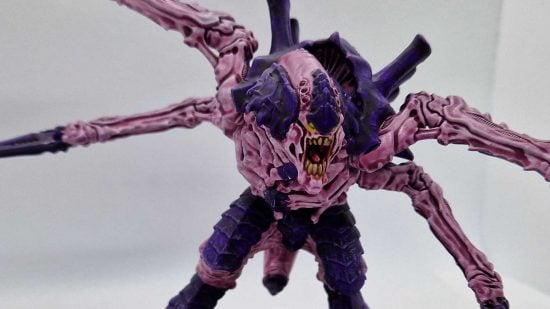
Carnifex
The Carnifex is a living siege weapon, a massively armored entity the size of a rhino tank, with the strength to break down the gates of a fortress or rip an armored vehicle in two. Carnifex biomorphs are spawned with armaments for a variety of roles – crushing claws for cracking armor, scything talons for ripping through infantry, and a variety of wicked ranged bio-armaments. Rarer biomorphs, such as the Rock-crusher Carnifex, are adapted to bring fortifications tumbling to the ground.

Screamer-Killer
The Screamer-Killer is an oversized Carnifex biomorph, and one of the earliest forms codified by the Imperium. As well as four massive taloned limbs, it is capable of generating vast quantities of bioplasma inside its thorax, which it vomits forth from its mouth with a distinctive screaming noise – hence its name.

Neurotryant
Neurotyrants are among the most powerful psychic entities in the Hive Fleets, a powerful synaptic node between the Hive Mind and their forces on the ground, and living weapons in their own right. They are accompanied by semi-parasitic Neurocytes, small hovering relay drones that can transmit their will to distant pockets of Tyranid forces.
Ripper Swarm
Ripper Swarms are the smallest Tyranid organism regularly encountered on the battlefield. Serpentine, with tiny foreclaws and a mouth filled with jagged fangs, they swarm over a planet in great tides, devouring all biomatter in their path. Though principally a part of the Tyranids biodigestion system, in combat they overhwelm foes many times their size through sheer weight of numbers.

Norn Emissary
The Norn Emissary is a towering giant of a Tyranid beast, standing taller than an Eldar Wraithlord. These monsters have immense psychic power, but rather than directed towards enemy troops, it grans them self control and individuality unlike anything else in the hive fleet. Their role is to eliminate or abduct enemy commanders with their physical might and psychic prowess.
Norn Assimilator
The Norn Assimilator is less psychically potent than the Norn Emissary, but trades out that psychic power for massive, toxin-injecting harpoon fists and even greater melee might. While the Norn Assimilator is slightly smaller than an Imperial Knight, it has a good chance of going toe-to-toe with one and winning – it’s purpose is to smash apart the most important aspects of an enemy defense.

Genestealers
Genestealers are a classic Tyranid unit, dating all the way back to the first edition of Warhammer 40k. They’re among the vanguard organisms of the hive fleet, infiltrating onto planets via space craft and using their sinister “Genestealer’s kiss” to infect the native population and create hybrid Genestealer cultists. The earliest form of Genestealer, now known as the ‘Ymgarl strain’, has distinctive feeder tendrils around its mouth.

Hormagaunts
Hormagaunts are bounding, claw-armed melee beasts that swarm the battlefield. They fight in enormous hordes that career forward, heedless of their own losses as they charge into melee with the enemy. Though little more than mindless beasts when separated from the Hive Fleet, they are capable of acting with incredible coordination when under its control.
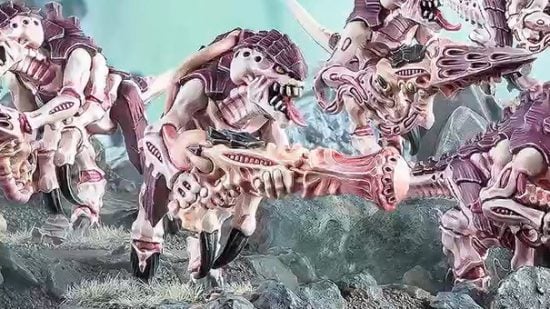
Termagants
Swarms of Termagants are equipped with all manner of obscene bioweaponry: beetle-firing fleshborers, spinefists, fleshworm-filled devourers, constricting strangleweb launchers, and the longranged spike rifle.
Barbgaunts
Asymmetrical Barbgaunts carry a particularly large symbiotic weapon beast on one hunched shoulder, a barblauncher. This support weapon fires a spray of lethal barbs with the force of a heavy bolter, capable of shredding infantry formations in seconds.

Lictors
The Lictor is a Tyranid stealth organism that fights in the vanguard of the hive fleets, infiltrating enemy positions with its chameleonic skin and draining the brains of enemy commanders with its feeder tendrils. It’s another classic monster that’s been part of the range since Warhammer 40k second edition. The latest plastic kit provides options to build the monster crouching for stealth or poised to strike.
Neurolictor
The Neurolictor is a variant of the Lictor that specialises in sowing terror and confusion with its psychic might as well as its lethal physical presence.

Biovore
The Biovore is a biological artillery piece, a huge, armored, tick-like creature, with a symbiotic weapon growing from its back. It’s capable of launching explosive spore mines across the battlefield. Even if these miss their target, they become a lethal, drifting hazard that will eviscerate the unwary.
Pyrovore
The Pyrovore has a similar bodyform to the Biovore, but mounts a flaming acid sprayer on its back instead of a long-range artillery piece. The lethal toxins that fill its bloated fire-chamber mean that, when it finally dies, it’s prone to explode catastrophically.
Warhammer 40k Tyranids rules
The Tyranids have two main army-wide special rules in Warhammer 40k: Syanpse, and Shadow in the Warp
Synapse
The Tyranids are a massed horde controlled by the gestalt psychic entity known as the hive mind. The malevolent intellect of this superorganism is channelled via Synapse organisms, command and control creatures that direct the lesser beasts that make up the horde.
As long as a Tyranids unit is within 6″ of a Synapse model, it makes Battle-shock tests on 3D6 instead of 2D6, meaning it is far less likely to break and cede control of objectives.
The Tyranids have a few tricks to expand this Psychic aura of command. The mighty Swarmlord has a nine inch Synapse range. The Neurothrope can dispatch its Neuroloid minions to tag along with other units, keeping them within synapse range even when they move beyond that six inch range, proving its not the size of the synapse range that matters, but how you use it.
Shadow in the Warp
The Shadow in the Warp is a very simple, very powerful ability, reflecting the terrifying psychic wail that the Tyranid hive fleets project into the minds of those who oppose them. Once per battle, in either player’s Command phase, if you have a model that projects the Shadow in the Warp on the battlefield, you can force every enemy unit to take a Battle-shock test.
This can potentially strip control of multiple objectives from your opponent, deny them the use of critical Stratagems, and force enemies to remain locked in melee or risk casualties from desperate retreats. The special character Deathleaper projects an aura of dread that penalises enemy Leadership, and the Neurothrope applies a Leadership debuff to enemies testing to resist the Shadow in the Warp
Tyranid Detachments
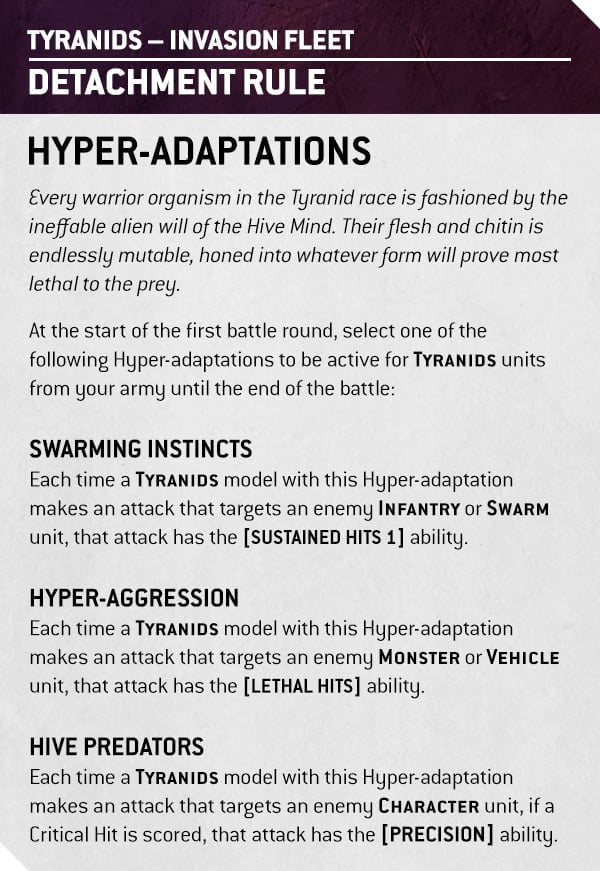
Tyranids Invasion Fleet Detachment
The Tyranids Invasion Fleet Detachment came in the free Index Tyranids, and is exactly the same in the Tyranids Codex. It grants your army Hyper-Adaptations, a choice of army wide buff you select after you’ve seen your opponent’s army.
Each buff grants you a weapon ability that will make your Tyranids more deadly against a specific type of unit, whether that’s Infantry and Swarms, Monsters and Vehicles, or Characters.
| Adaptation | Buff |
| Swarming Instincts | When targeting Infantry or Swarms, attacks have Sustained Hits 1 |
| Hyper-Aggression | When targeting Monsters or Vehicles, attacks have Lethal Hits |
| Hive Predators | When targeting a unit containing a Character, Critical Hits gain Precision (they can target the character even while it has living bodyguards) |
Tyranid Vanguard Onslaught Detachment
Tyranid Vanguard organisms are the first to make planetfall, sometimes preceding the hive fleet’s assault by months. They include infiltrator organisms like Lictors and Neurolictors, winged beasts like Gargoyles and Winged Hive Tyrants, and the rapid Genestealers.
All Models in a Vanguard Onslaught Detachment can charge in the same turn that they fall back from combat; units with the Vanguard Invader keyword can also charge after advancing. The special character Deathleaper can also be the force’s Warlord, though Winged Hive Tyrants and Genestealer Broodlords are also options.
This is a fast and fluid force. The ‘Neuronode’ enhancement allows three Vanguard Invader units to redeploy after your opponent finishes their deployment, while the ‘Seeded Broods’ Stratagem will let you deploy two Vanguard Invader units from reserve on turn one.
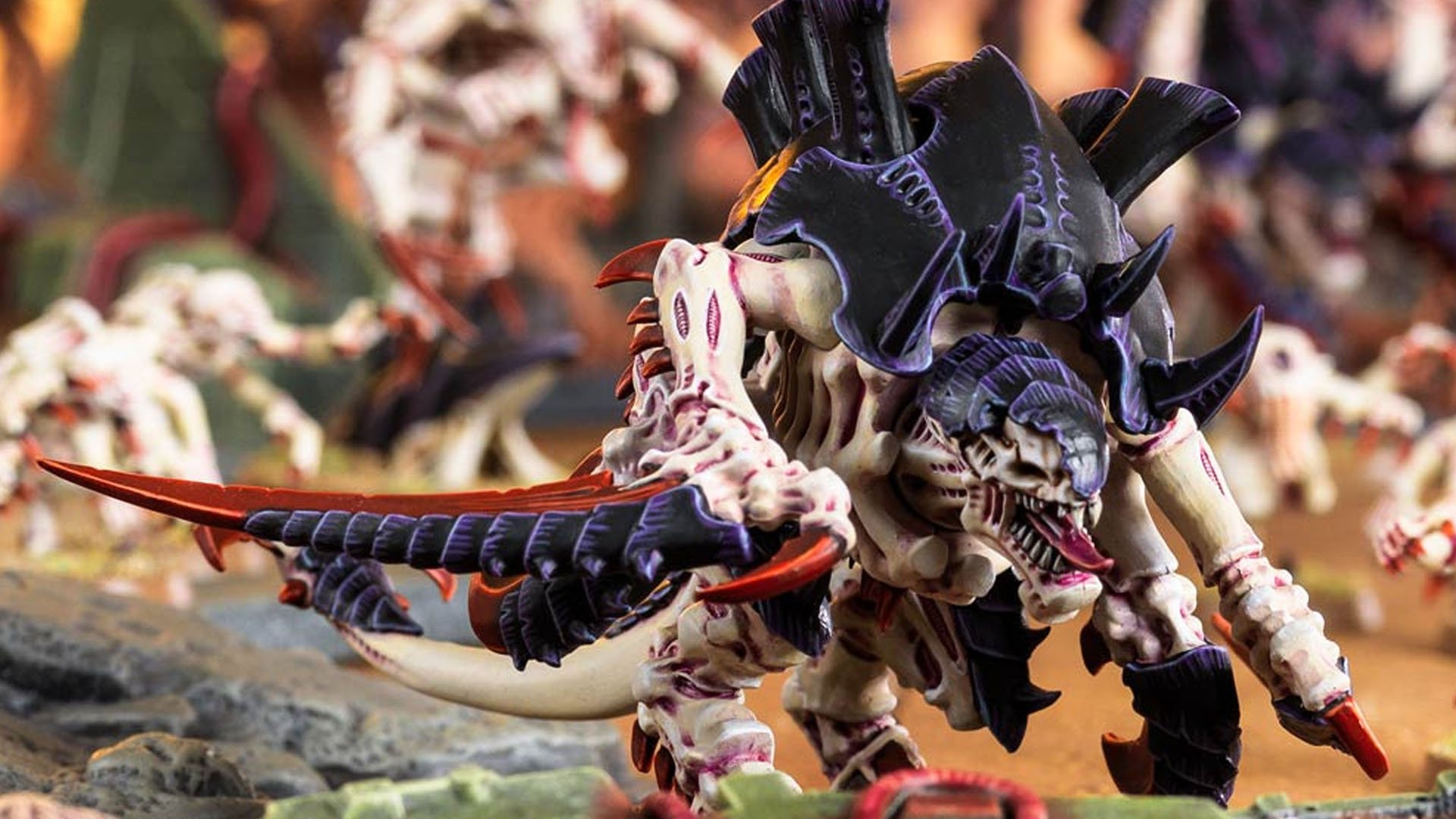
Tyranid Crusher Stampede Detachment
A Tyranid Crusher Stampede is a heaving mass of muscle and chitin, the largest Tyranid warbeasts directed against an enemy strongpoint. It’s filled with monsters: Carnifexes and their Screamer Killer cousins, Tyrannofexes, Exocrines, Hive Tyrants, the dreaded Norn Emissary, and more…
All Monsters in the Crusher Stampede Detachment get +1 to hit once their unit is below Starting Strength: if they start as a unit with one model, that means as soon as they’ve taken a wound. Once below half strength (ie, they’ve lost half their wounds), they get +1 to wound as well.
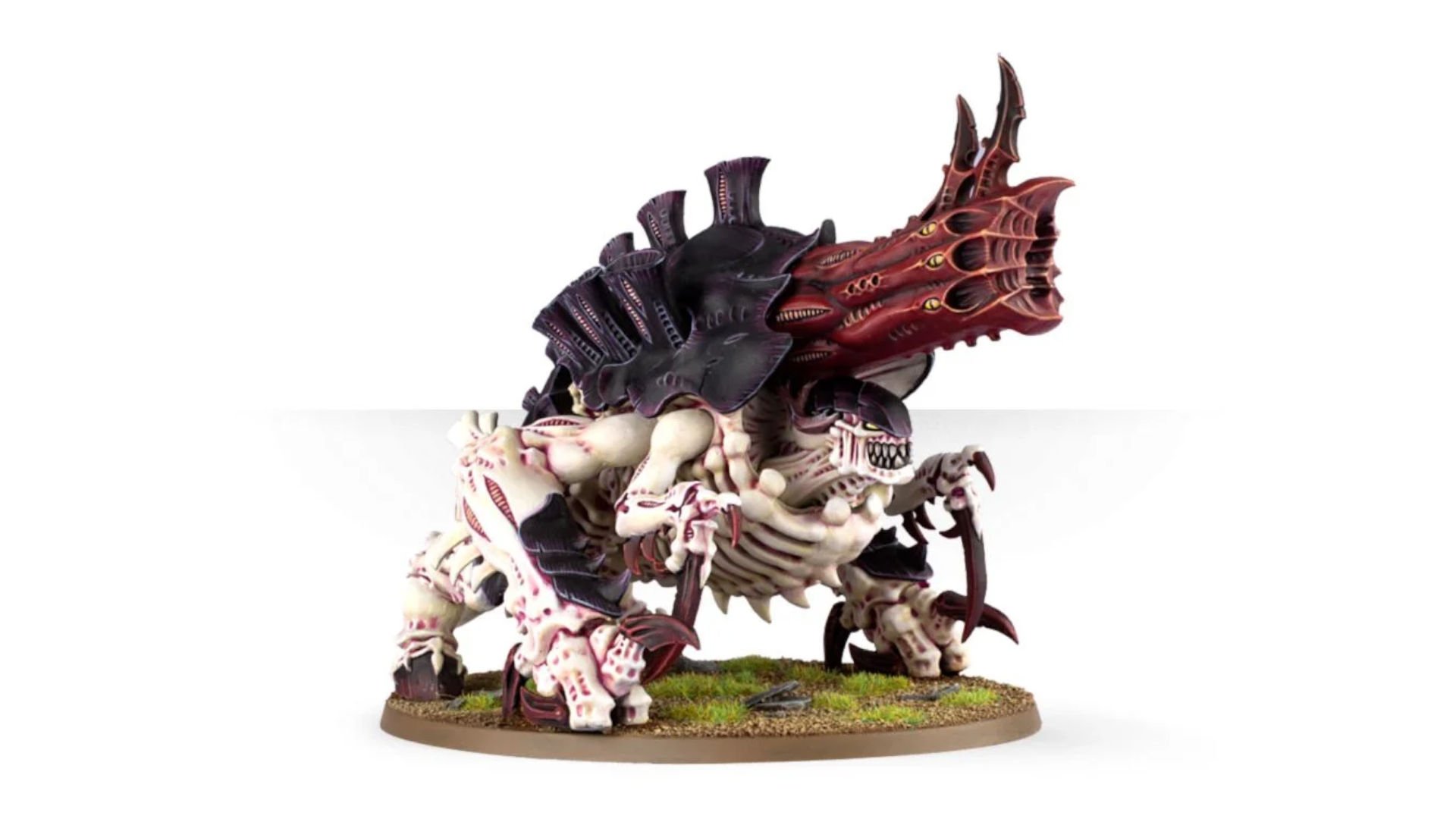
These beasts dominate the battlefield with sheer mass. The Ominous Presence enhancement grants +3 Objective Control characteristic. That stacks with the Norn Emissary and Norn Assimilator’s ‘Singular Purpose’ ability to have Objective Control 15 on a particular objective, for a truly unmovable mountain of muscle.
Stratagems like Untramelled Ferocity, which allows a monster to simply move through enemy models, or Swarm-Guided Salvoes, which grants the Indirect Fire weapon ability, mean there’s no escape from your alpha warbeast’s belligerence.
Tyranid Assimilation Swarm Detachment
The purpose of a Tyranid assault on a planet is to render it down into usable biomass to feed to the hive ships. Assimilation organisms facilitate that process, including squirming Rippers, psychic Psychophage, and ravenous Haruspex, before they too are rendered down into bio-slurry.
While Harvester units are in range of an objective that the Tyranid player controls, they will regenerate Tyranid units, healing lost wounds or returning infantry models to play.
The enhancements available to this Detachment all relate to Harvesters: the Instinctive Defence Enhancement turns a unit into a guard dog for Harvesters, letting it use the Heroic Intervention Stratagem for free to defend them, or letting it be healed by two Harvester units each turn.
Tyranid Synaptic Nexus Detachment
A Tyranid Synaptic Nexus is a focal point for the hive mind, led by powerfully psychic Neurotyrants, Zoanthropes, Hive Tyrants, and Malanthropes.
Each round the Tyranid player can select a Synaptic Imperative bonus that will apply to all their units in Synapse range. The hive mind channels its concentrated will, making the xenos harder to kill, faster, or even more voracious. Though the buffs are different, this is an even more flexible detachment than the Invasion Fleet, but relies more on Synapse organisms.
The Stratagems for this detachment allow you to tinker with your Synaptic web: extending its range with Synaptic Channelling, altering which Synaptic Imperative a unit is affected by using Imperative Dominance, or focusing its Irresistible Will on a single enemy unit to grant all units bonuses to hit and wound it.
Tyranid Endless Swarm Detachment
The quintessential Tyranid force is an Endless Swarm of warrior beasts hurling themselves into the guns of their foe, utterly heedless of their own mortality. This force is a rapid-moving tide of Hormagaunts, Termagants and Neurogaunts, accompanied by swarms of chittering Gargoyles.
Whenever an Endless Multitudes unit in this army suffers casualties to enemy shooting attacks, it can move D6″ towards the nearest enemy unit, even entering engagement range. The Stratagem ‘Synaptic Goading’ allows you to direct the unit towards an objective, rather than the nearest enemy unit, for some tactical control.
The Unending Waves stratagem costs 2CP, but allows you to place a destroyed Endless Multitudes unit into reserves, and Bounding Advance should get them back into the action swiftly.
Tyranid Paint Schemes
Tyranids army have a look and feel completely different to anything else on the battlefield. You’ll find no metal armor here, no sci-fi guns or tanks (unless you count the related Genestealer Cults armies, but that’s a different matter for a different day). Tyranids are made of flesh and bone, amd Tyranid paint schemes highlight this alien biology.
Official Games Workshop Tyranids paint schemes are an excellent place to start. Hive Fleet Behemoth uses rich dark purple tones on the bone armor with pale flesh underneath. You can then highlight eyes, tongues, teeth, and weapons with accent colors, drawing attention to their wickedly sharp blades or bio-engineered guns.
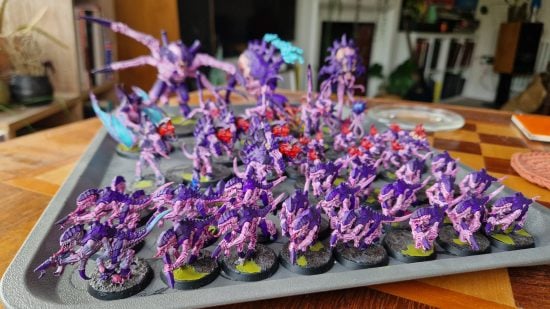
Nooks and crannies in alien flesh work great with Contrast paints. Similarly, their bone carapaces work well with dry brushing techniques, helping you make the model’s edges pop while maintaining their unique organic feel.
If you’re designing your own color scheme, look to nature for inspiration; insects, crustaceans, reptiles, and amphibians have some amazing color combinations.
Tyranids Codex release date
The Warhammer 40k 10th edition Tyranids Codex released on Saturday, September 9.
Index Tyranids
When the new edition of Warhammer 40k launched, Games Workshop made the Tyranids 10th edition rules free to download in Index Tyranids from the Warhammer Community website. Those rules are now out of date, with the release of Codex Tyranids, but they’re still accessible online if you’re happy to play with slightly out of date rules:
Click here to download your free Tyranids 10th edition Index datasheets.
Combat Patrol Tyranids
Combat Patrol is the new starter game mode for Warhammer 40k beginners. It’s not simple by any means, but it does make the game more approachable in a lot of ways: the forces have slightly fewer rules, and the various Combat Patrol forces for each faction have been balanced against one another.
You can download the rules for Combat Patrol Tyranids for free via this link.
These are the 32 models in Combat Patrol Tyranids:
- Winged Tyranid Prime x 1
- Hormagaunts x 20
- Von Ryan’s Leapers x 3
- Psychophage x 1
- Barbgaunts x 5
- Ripper Swarms x 2
Because the Tyranids are the main antagonist of 10th edition 40k, models from their Combat Patrol are included in the Warhammer 40k starter sets. The Ultimate starter set contains the Complete Combat patrol, while the regular Starter set has almost all of it: you need to pick up a unit of five Barbgaunts separately to complete the patrol.
Can’t get enough hideous monsters in your life? Check out our guide to the best horror miniatures.
